The most exciting fossil finds of the 21st century
Unburied treasures
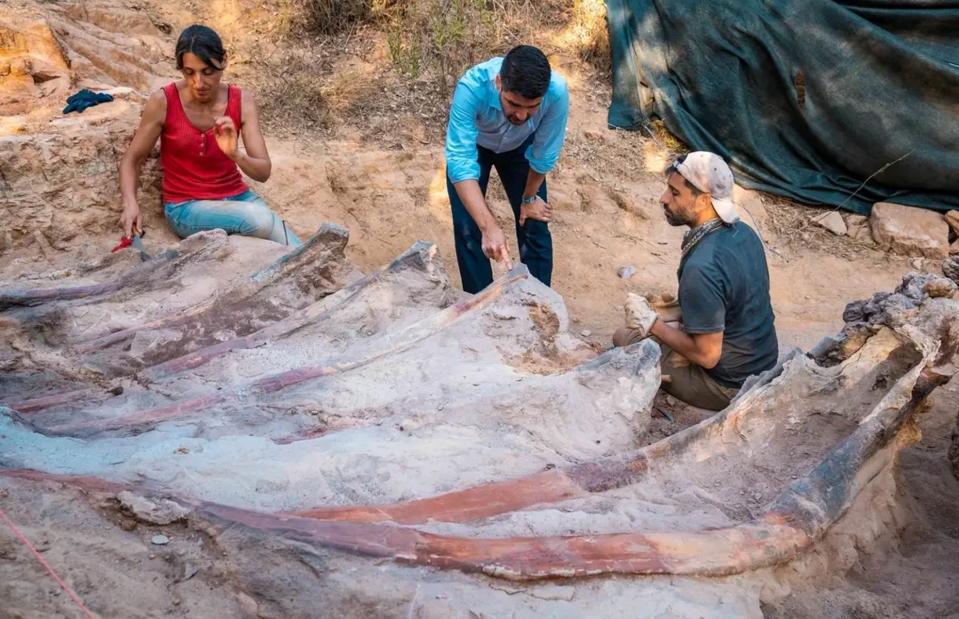
Elisabete Malafaia/Faculdade de Ciências da Universidade de Lisboa
Planet Earth is at least four-and-a-half billion years old, with its past inhabitants ranging from ferocious sea monsters and giant winged beasts to early species of apes and humans. In recent times, remarkable discoveries have cropped up all over the world, expanding our knowledge of what once roamed the land, circled the skies and ruled the oceans. Here, we explore some of the best fossil finds from the 21st century, which have helped unlock natural history’s most fascinating secrets.
Read on to dig into the best fossil discoveries of recent times...
Homo luzonensis, Philippines
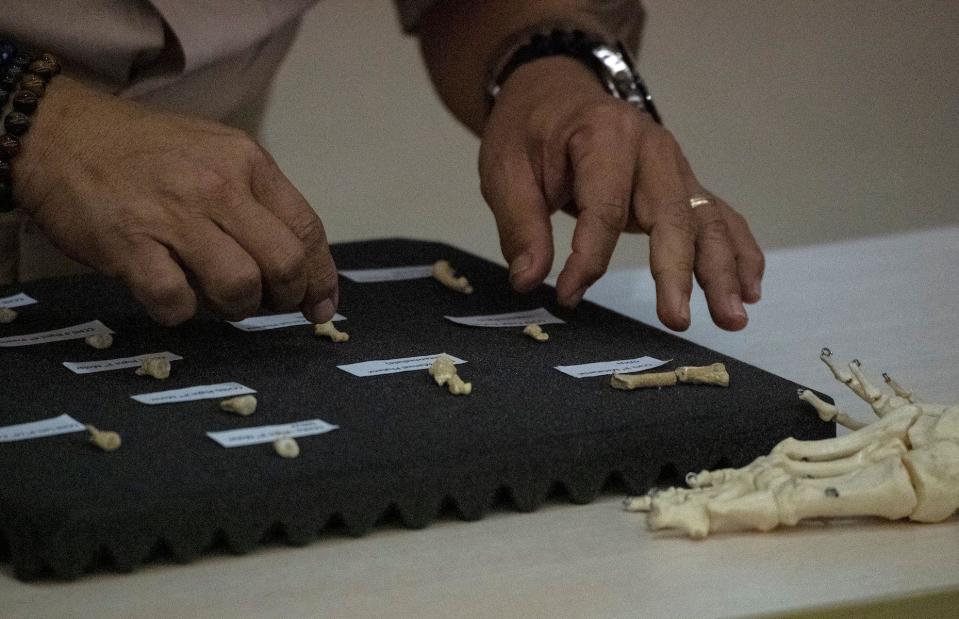
Noel CELIS/AFP/Getty Images
When Armand Mijares, an archaeologist at the University of the Philippines Diliman, first excavated Callao Cave on the island of Luzon in 2003, he found signs of ancient human activity – but no fossilised remains. That remained true until 2007, when he returned to the site to dig deeper and discovered the almost-complete foot bone of a 67,000-year-old human. Also finding teeth, fingers, toes and a partial femur fossil, Mijares and his fellow researchers announced in 2019 that the bones belonged to a new species of small-bodied hominin, which they called Homo luzonensis.
Ankylosaur’s voice box, Mongolia
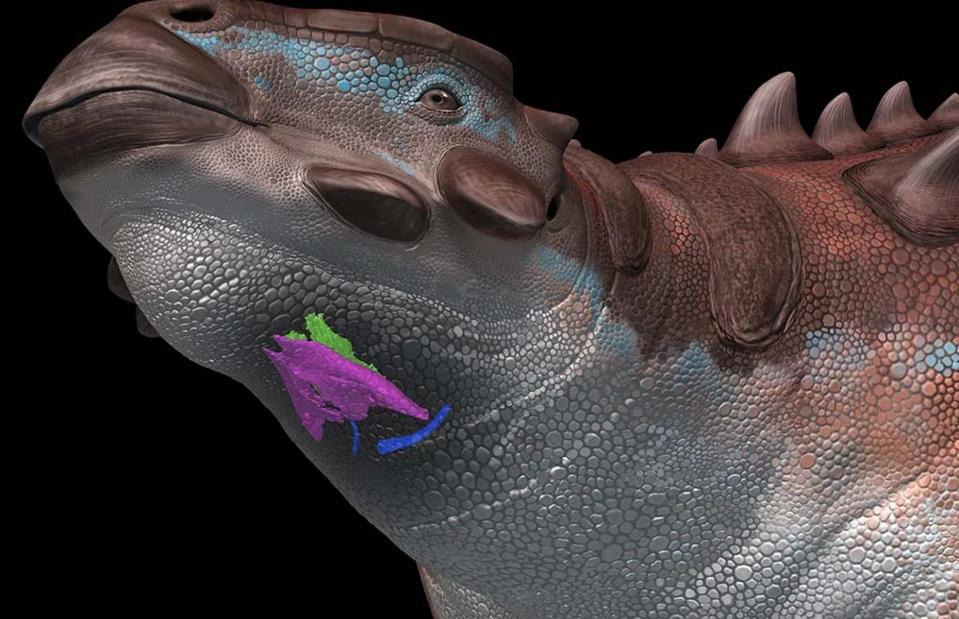
Tatsuya Shinmura/Wikimedia Commons/CC BY 4.0
This fascinating discovery of the first fossilised voice box (larynx) found in a non-avian dinosaur was a rare find. It belonged to an 80-million-year-old club-tailed, armoured creature called Pinacosaurus grangeri that was found in Mongolia in 2005. After closer study of the preserved larynx, researchers revealed in 2023 that the dinosaur could have sounded more bird-like than initially thought, possibly producing quite melodious, intricate rumbles.
Super-sized penguin, New Zealand
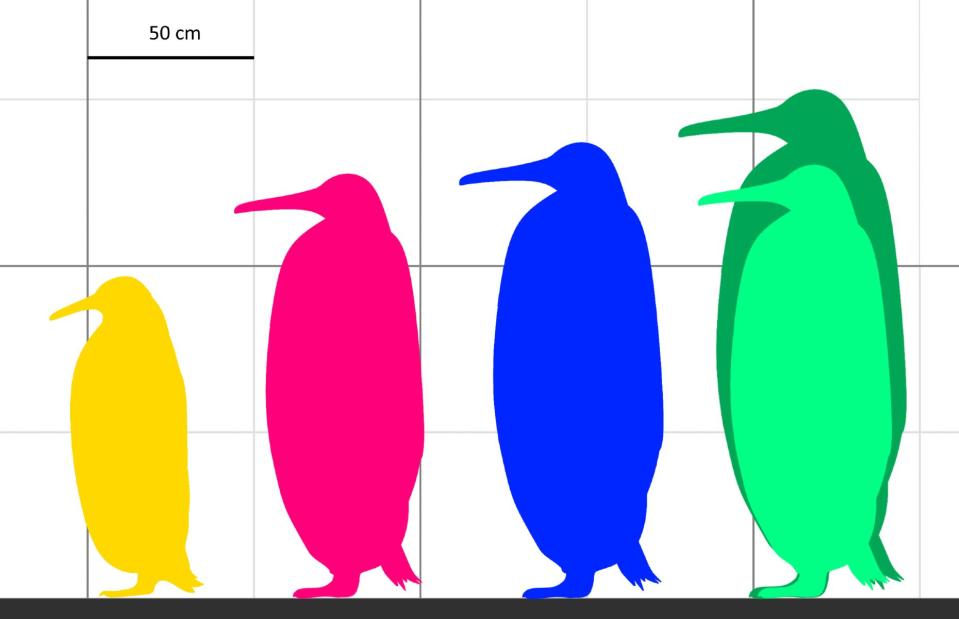
Ta-tea-two-te-to/Wikimedia Commons/CC BY-SA 4.0
On New Zealand's North Island in 2006, a group of schoolchildren stumbled across an incredible find during a fossil-hunting field trip. Preserved impeccably in mudstone was a new species of 30-million-year-old penguin, described in 2021 as Kairuku waewaeroa. Much larger in size than the penguins we know today, its extra-long legs differentiate it from other ancient penguin species. This image shows the size of Kairuku waewaeroa (in blue) compared with the modern emperor penguin (in yellow) and other giant penguins discovered in the region.
Homo naledi, South Africa
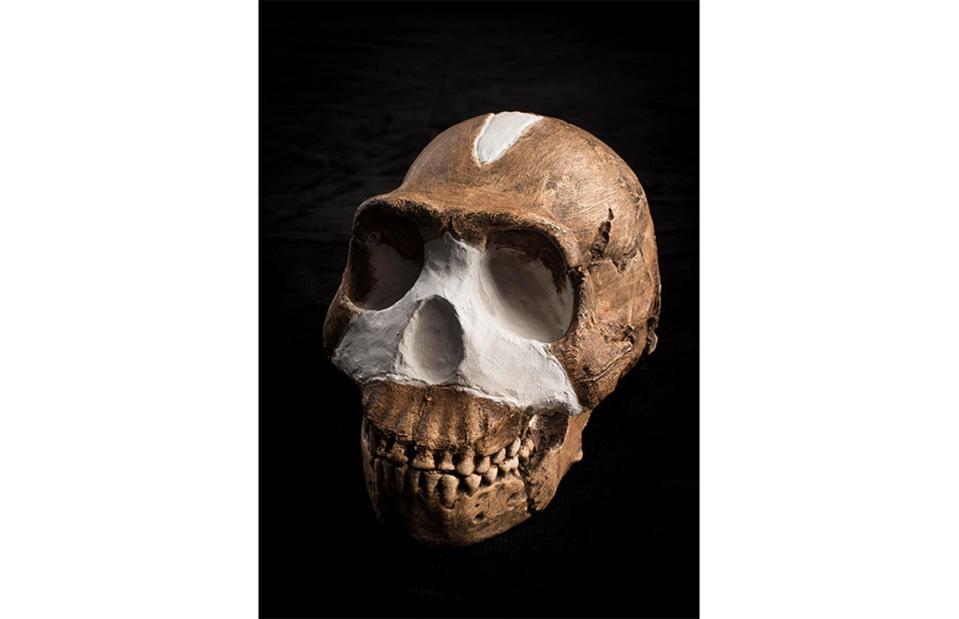
Courtesy of Wits University
When cavers happened across a horde of fossilised human bones in a deep chamber of the Rising Star cave system in 2013, there was no telling just how astonishing the find would turn out to be. Following the excavation of more than 1,500 bones (belonging to at least 15 different individuals), the species was identified as a new primitive human and named Homo naledi in 2015. Walking the Earth around 300,000 years ago, Homo naledi had small skulls, elongated curved fingers, slender bodies and wide hips. The discovery is one of the most important ever found on the African continent.
‘Sleeping’ nodosaur, Alberta, Canada
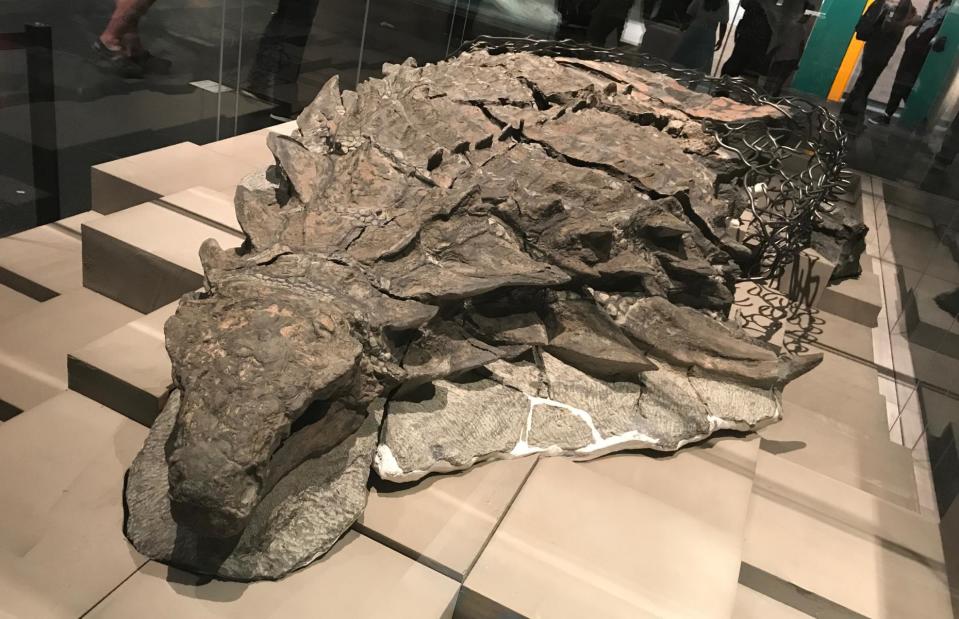
ケラトプスユウタ/Wikimedia Commons/CC BY-SA 4.0
This cute little creature, frozen in a perpetual doze, was discovered at an Alberta mine in 2011 when a heavy equipment operator accidentally excavated part of its fossilised skin. The find turned out to be an armoured nodosaur, a member of the ankylosaurus family, that died more than 110 million years ago. Sporting some of the best-preserved skin and armoured plates ever found on a dinosaur fossil, the nodosaur ‘mummy’ is believed to have met its end in or near a river before floating out to sea and sinking down to the bed.
Fossilised forest, Norway
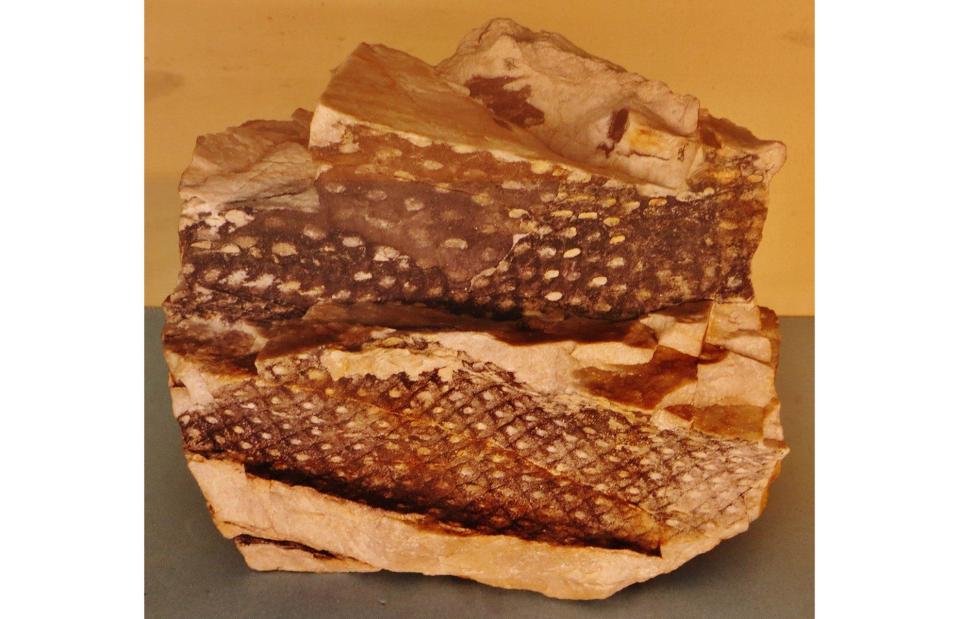
Ghedo/Wikimedia Commons/CC BY-SA 4.0
A study published in November 2015 revealed the existence of a mysterious fossilised tropical forest on the Arctic archipelago of Svalbard. Like the impressions pictured here, the trees had crosshatched trunks and could have been up to 12 feet (3.7m) tall, with flared bases and pine-like needles. Researchers found the preserved stretch of fossilised stumps to be among Earth's most ancient, at 380 million years old. Though continental drift sent the forest north, it would have originally grown much closer to the equator.
World’s largest stegosaurus fossil, Colorado, USA
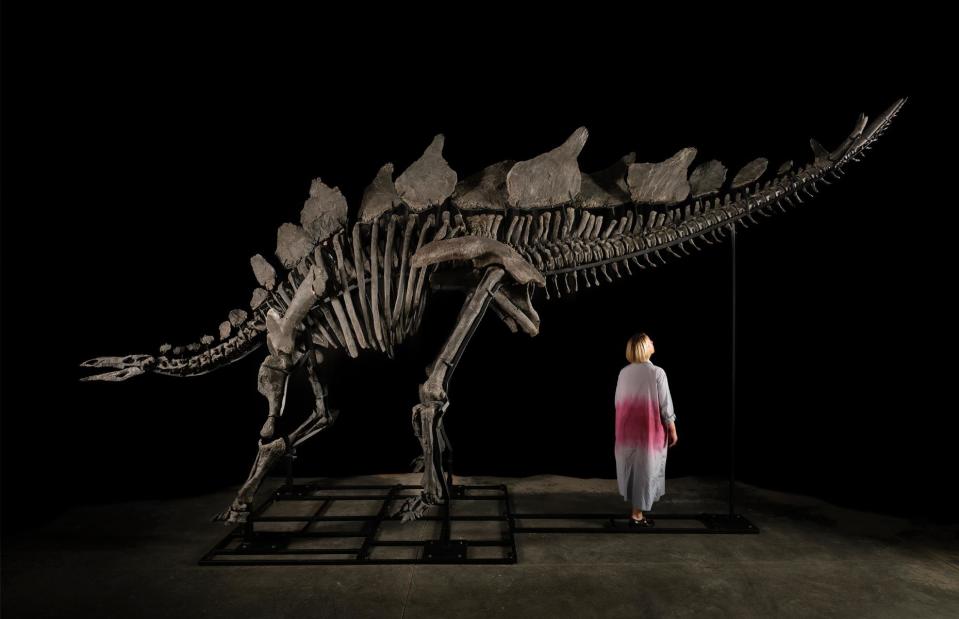
Matthew Sherman
They may be one of the world’s most recognisable dinosaurs, but stegosaurus skeletons (pictured) are rather rare. So when palaeontologist Jason Cooper discovered one near the fittingly named town of Dinosaur in 2022, it was immediately recognised as a significant find. At 11 feet (3.4m) tall and more than 20 feet (6m) long, Cooper’s pointy-backed herbivore – affectionately known as Apex – is the largest and most intact stegosaurus fossil ever unearthed. In July 2024, Apex will be auctioned off in New York as part of Sotheby’s annual ‘Geek Week’. It is expected to fetch at least £3.2 million ($4m).
Megalodon tooth, Maryland, USA
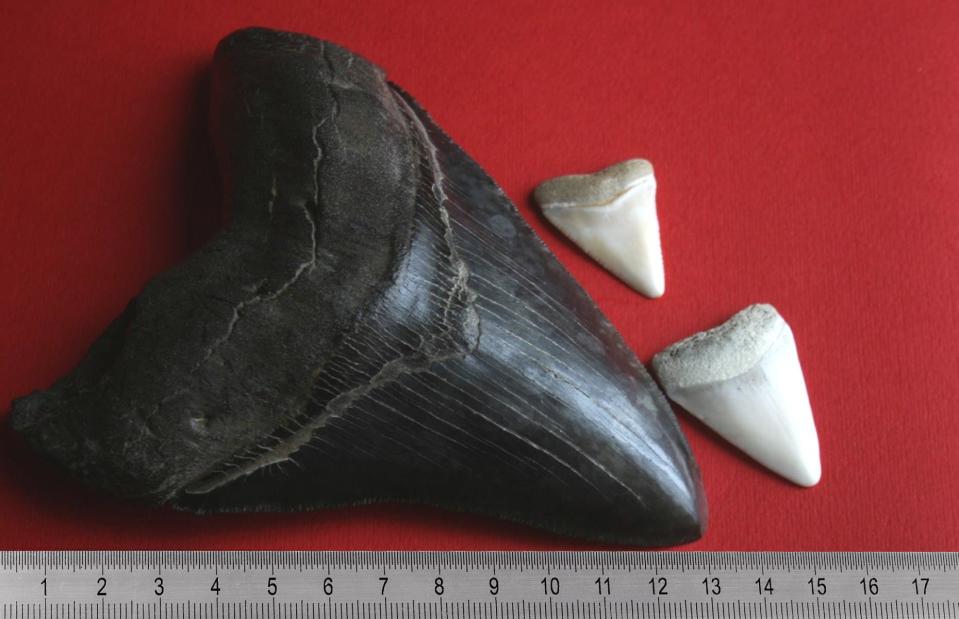
Regi51/Wikimedia Commons/CC BY-SA 2.5
On Christmas Day 2022, nine-year-old Molly Sampson was exploring the shallow waters of Calvert Cliffs State Park in her brand-new waders when she picked up the enormous tooth of a megalodon – the largest and fastest-moving shark species that ever existed. Megalodons had cartilaginous skeletons, which do not fossilise well, so most of what remains (and what we know of them today) comes from their teeth. This image shows a megalodon tooth similar in size to Molly’s find, alongside those of a great white shark.
Dinosaur footprint, Wales, UK
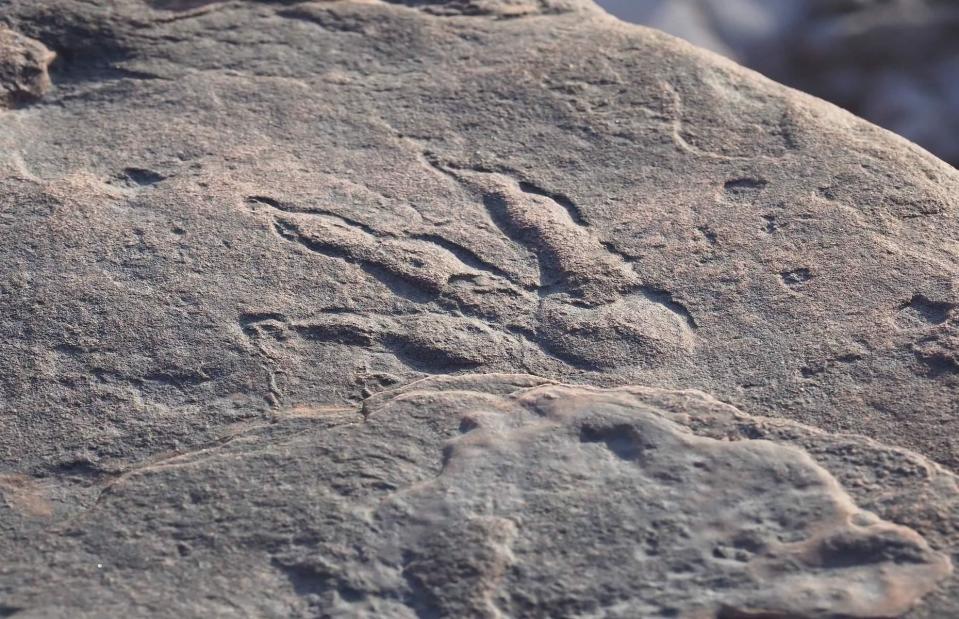
@museumcardiff/Facebook
On the subject of diminutive fossil-hunters, four-year-old Lily Wilder made headline news in 2021 when she discovered a dinosaur footprint while out on a coastal walk with her dad. Lily’s footprint – deemed to be of international importance by experts from Archaeology Cymru – belonged to an as-yet unknown herbivorous dinosaur and is said to be “the finest impression of a 215-million-year-old dinosaur print found in Britain in a decade”. The fossil is now being displayed at National Museum Cardiff.
Ancient shark jaw and teeth, Kentucky, USA
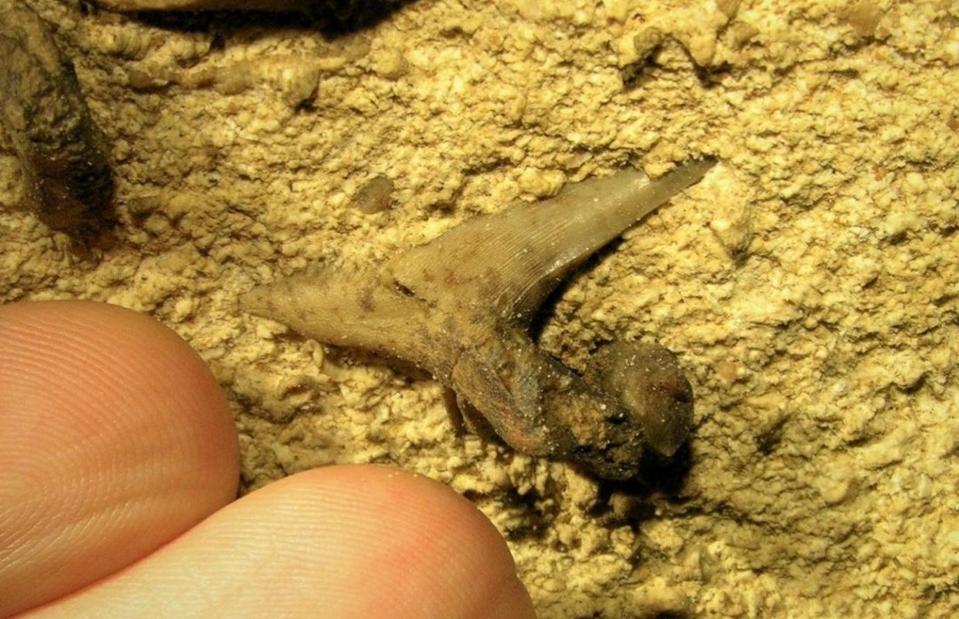
@mammothcavenps/Instagram
We know that sharks don’t age well, which makes this 2019 find even more impressive. Responding to reports from scientists at Mammoth Cave National Park, palaeontologist John-Paul Hodnett discovered the partial remains of a head from an ancient shark, including some teeth, the lower jaw and remnants of skull cartilage. Though Kentucky is very much a landlocked state, it (along with much of North America) would have sat below shallow seas during the Late Mississippian period – about 330 million to 325 million years ago. In total, Hodnett found remains from around 150 individual sharks – belonging to between 15 and 20 different species – within Mammoth Cave.
Ancient human footprints, New Mexico, USA
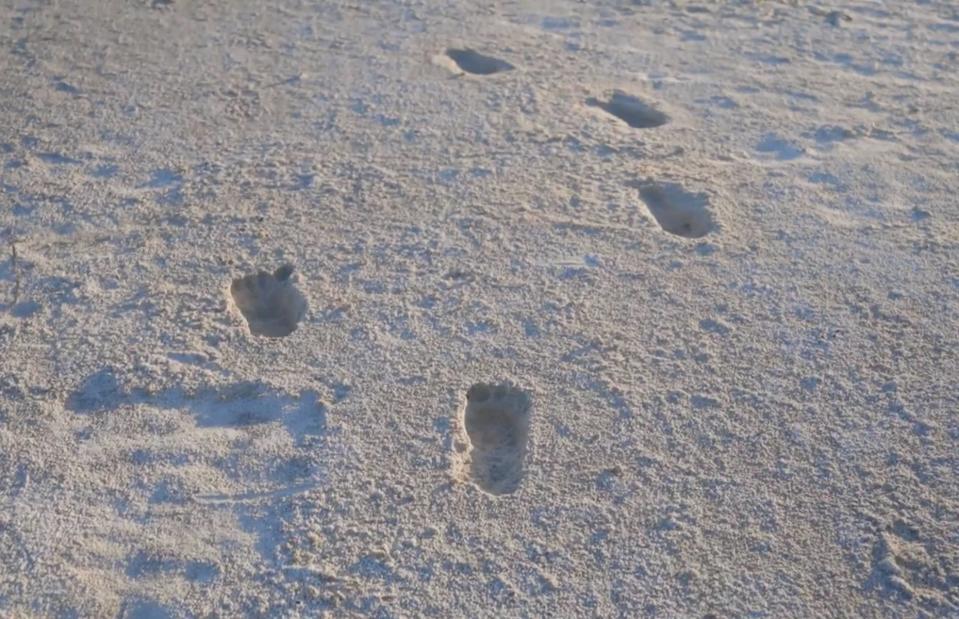
Courtesy of the National Park Service
Some of the oldest evidence of human habitation in the Americas was uncovered in 2019, when geologist Matthew Bennett and David Bustos, the White Sands National Park’s resource programme manager, spotted a set of unmistakably human fossilised footprints on a visit to the park. Archaeological research reported in September 2021 dated the prints to between 21,000 and 23,000 years old – at least five millennia before it was previously thought humans arrived in North America. The tracks were found buried in the bed of Lake Otero, which dried up about 10,000 years ago.
Sauropod skull, Queensland, Australia
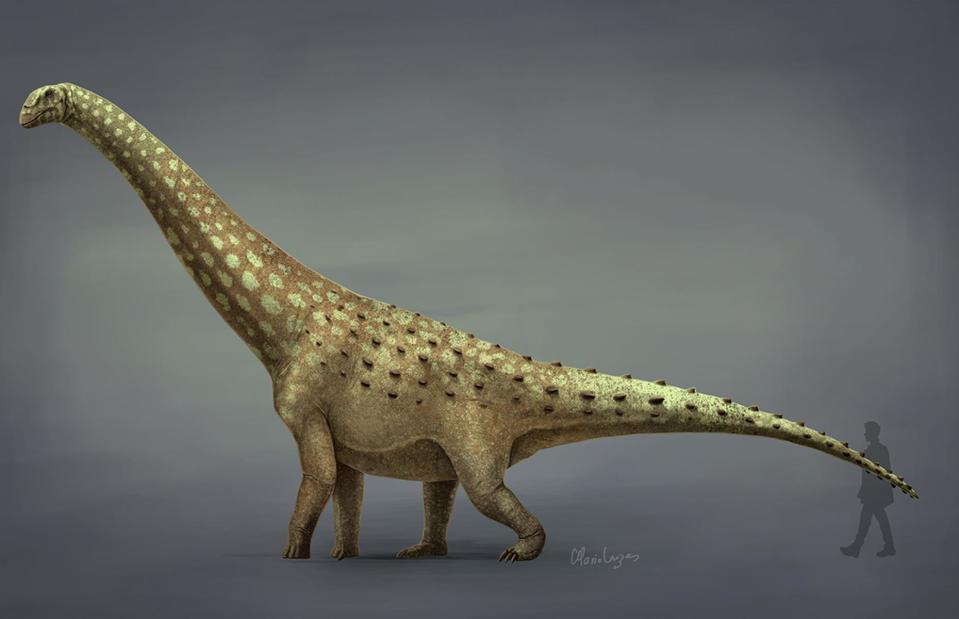
Mario Lanzas/Wikimedia Commons/CC BY-SA 4.0
Who knew a fossilised skull could help map a dinosaur's movements across the world? That's exactly what was revealed when researchers from Curtin University examined the near-complete skull of a sauropod (a long-necked herbivore), found in 2019 on an annual dig in Winton in Queensland and affectionately nicknamed 'Ann'. Belonging to the species Diamantinasaurus matildae, the skull was the first to be found in Australia and shows the dinosaur's passage from South America via a then forested, unfrozen Antarctica – between 95 and 100 million years ago.
Ancient giant rhino, China
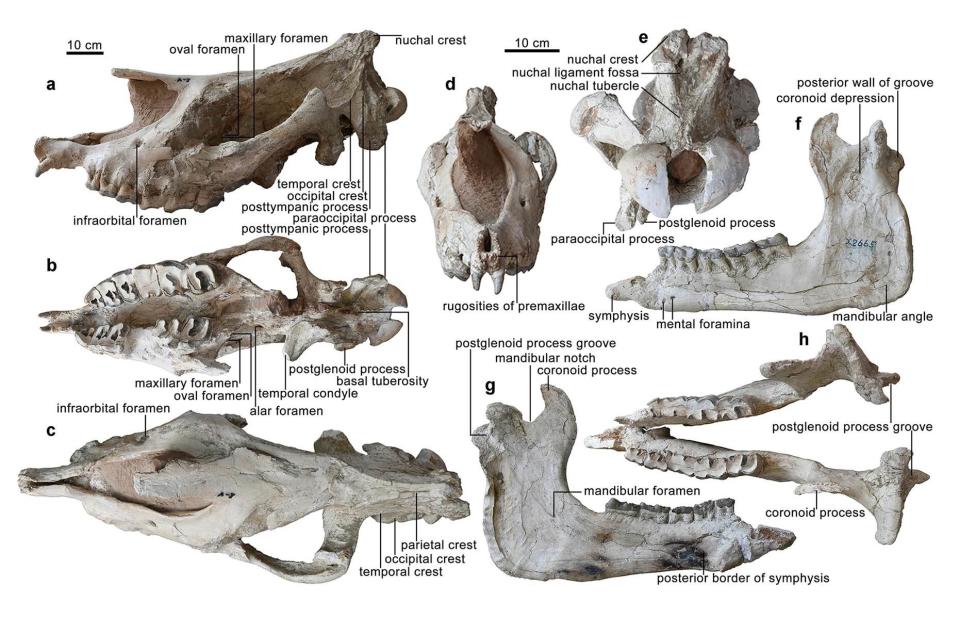
Tao Deng, Xiaokang Lu, Shiqi Wang, Lawrence J. Flynn, Danhui Sun, Wen He & Shanqin Chen/Wikimedia Commons/CC BY 4.0
In 2021, following the examination of fossilised remains that showed up in China’s Linxia Basin in 2015, a newly identified species of gigantic hornless rhino was described. The animal (Paraceratherium linxiaense) is believed to have resembled the modern-day tapir but with the weight of four African elephants, making it one of the largest known mammals ever to have lived. The fossils, comprising a skull and jaw from one individual and the vertebrae of another, are around 26.5 million years old.
Prehistoric vomit, Utah, USA
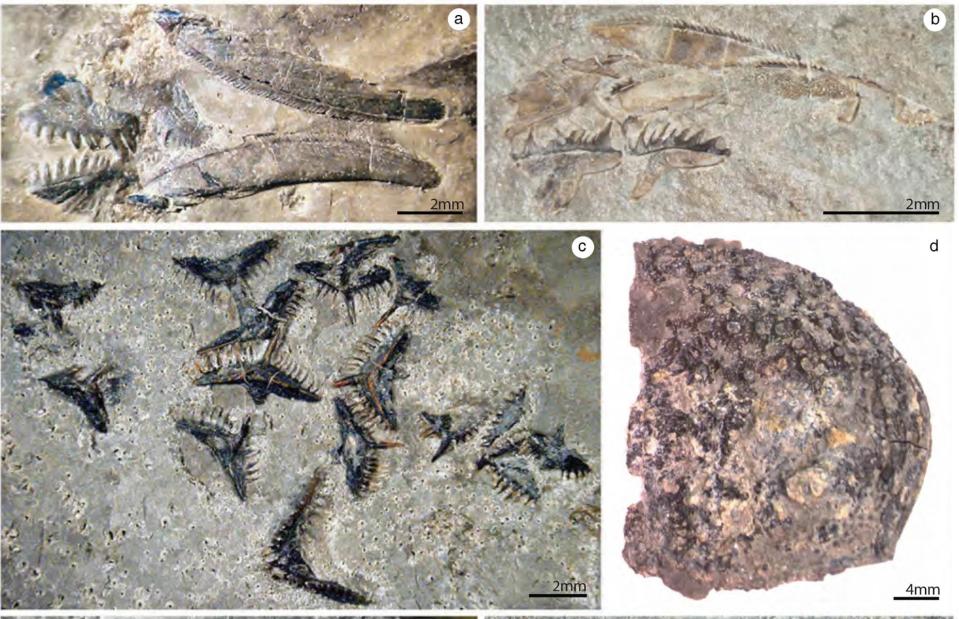
Derek E.G. Briggs; Huaibao P. Liu; Robert M. McKay; Brian J. Witzke/Wikimedia Commons/CC BY 3.0
Known among local palaeontologists as the 'Jurassic salad bar', the Morrison Formation – which runs across the western United States – is an expanse of sedimentary rocks famed for its fossil deposits. The most unusual of all was discovered in 2018, when researchers in Utah came across a small pile of prehistoric puke. The fossilised remains of an animal's stomach contents is also called bromalite (examples pictured here) and, in this case, comprised the bones of a frog, a salamander and several more unidentified species. Given the age of other fossils found in this location, the vomit is suspected to be at least 145 million years old.
Microscopic cellular balls, Scotland, UK
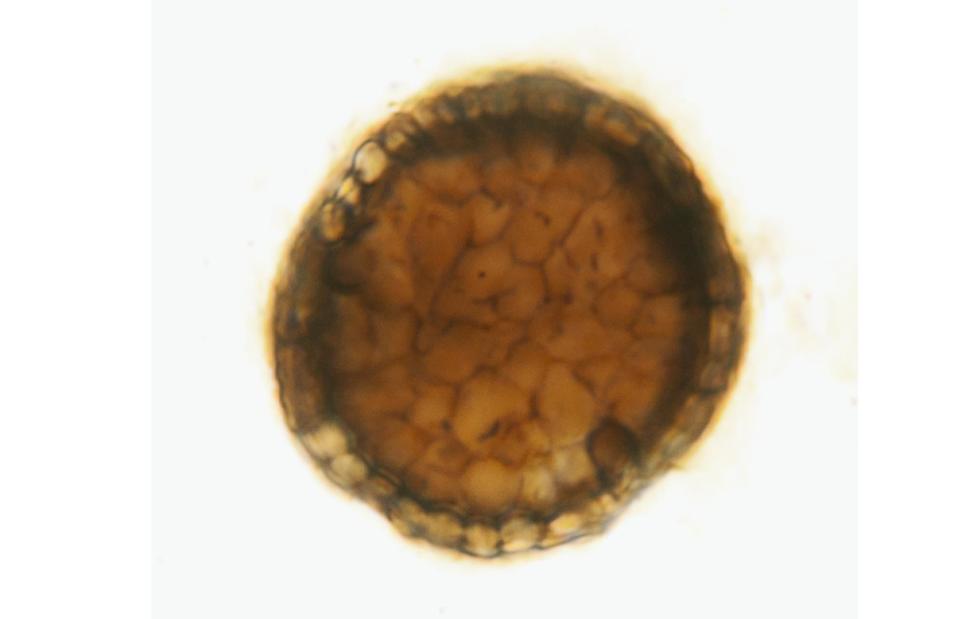
Paul K Strother
This incredible microscopic fossil ‘ball’ was discovered in the sediments of a former lake in the Scottish Highlands by a team of researchers led by the University of Sheffield and Boston College. They revealed in a 2021 report that the spherical fossil bridges the evolutionary gap between single-celled organisms and complex multicellular life. Named Bicellum brasieri, the ball contains two distinctive cell types and is estimated to be one billion years old, making it the oldest known fossil of a multicellular organism and an amazing example of early life on our planet.
Yamatosaurus izanagii, Japan
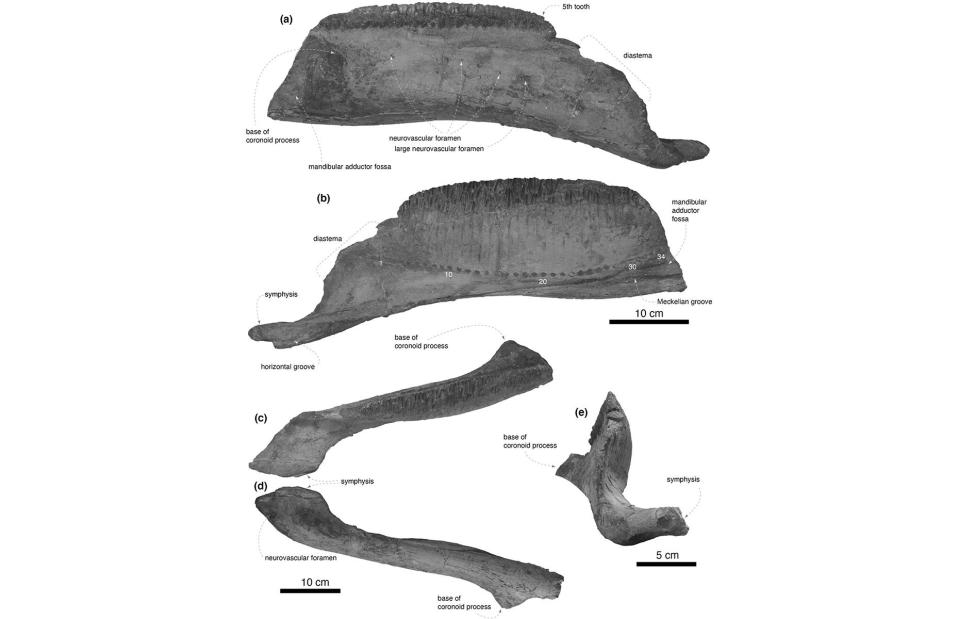
Yoshitsugu Kobayashi, Ryuji Takasaki, Katsuhiro Kubota & Anthony R. Fiorillo/Wikimedia Commons/CC BY 4.0
Though the duck-billed herbivores known as hadrosaurs are the most commonly found of all dinosaur fossils, there have been new species of them described as recently as 2021. Following an amateur fossil hunter’s discovery of dinosaur bones in a roughly 72-million-year-old layer of sediment at a cement quarry on Awaji Island in 2004, the remains were analysed by an international team of palaeontologists. Not only did they recognise it as a new species (Yamatosaurus izanagii), they also found suggestions that hadrosaurs migrated from Asia to North America – the opposite of what was previously thought.
Ichthyosaur, England, UK
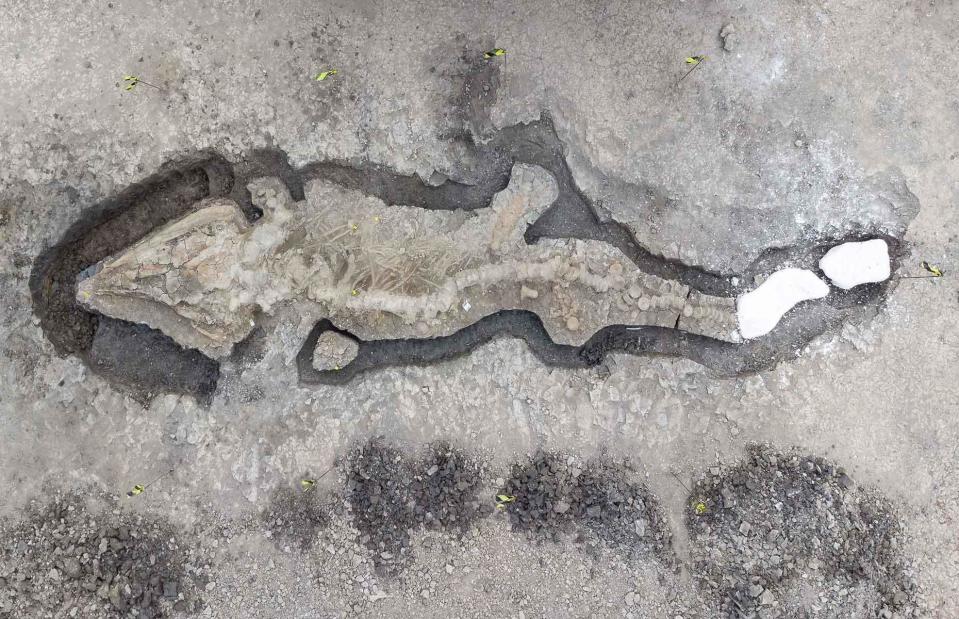
Courtesy of Anglian Water
In February 2021, a routine maintenance procedure at Rutland Water Reserve in England's smallest county unearthed the fossilised remains of an ichthyosaur. The prehistoric sea dragon, whose skeleton was remarkably well-preserved, measured 33 feet (10m) in length and was thought to be around 180 million years old. Palaeontologists declared it the largest UK specimen of its kind and the most complete known study. This find is particularly significant, but ichthyosaur fossils have been rocking up in Britain for over 200 years.
Oviraptorosaur and embryos, China
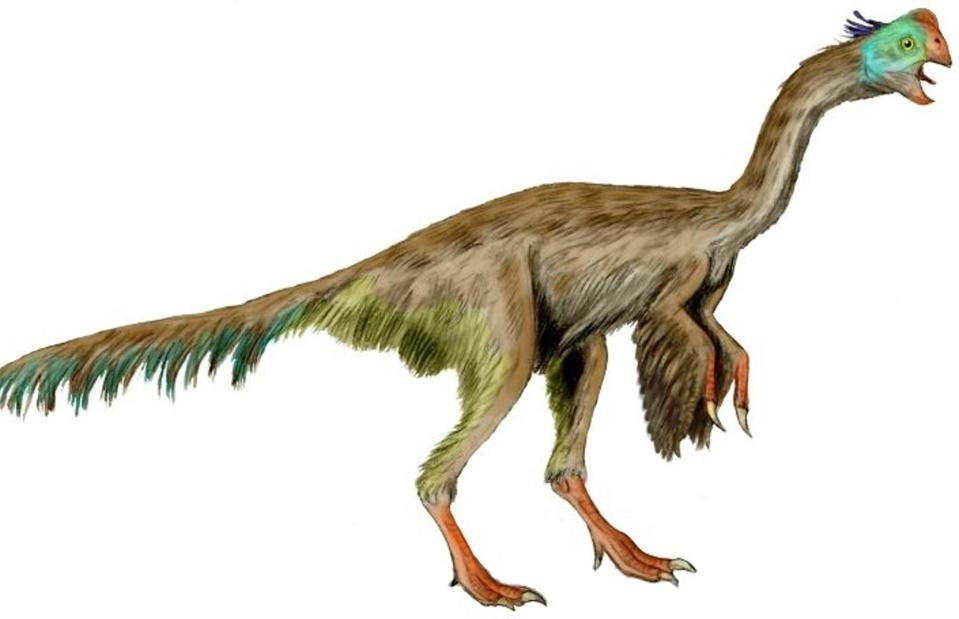
Nobu Tamura (http://spinops.blogspot.com)/Wikimedia Commons/CC BY-SA 3.0
In a world-first, scientists in 2021 uncovered the fossilised remains of a nesting non-avian dinosaur in Ganzhou City. Found sitting on at least 24 of its eggs, the oviraptorosaur was discovered in rocks dating back 70 million years and is believed to have died while incubating, as opposed to guarding hatched young. Some of the embryos were actually visible inside the eggs, as well as the forearms, pelvis, hind limbs and partial tailbone of the mother. This unusual species would have had feathers and a crested head – somewhere between an ostrich and a large lizard.
Coelacanth lung, Morocco
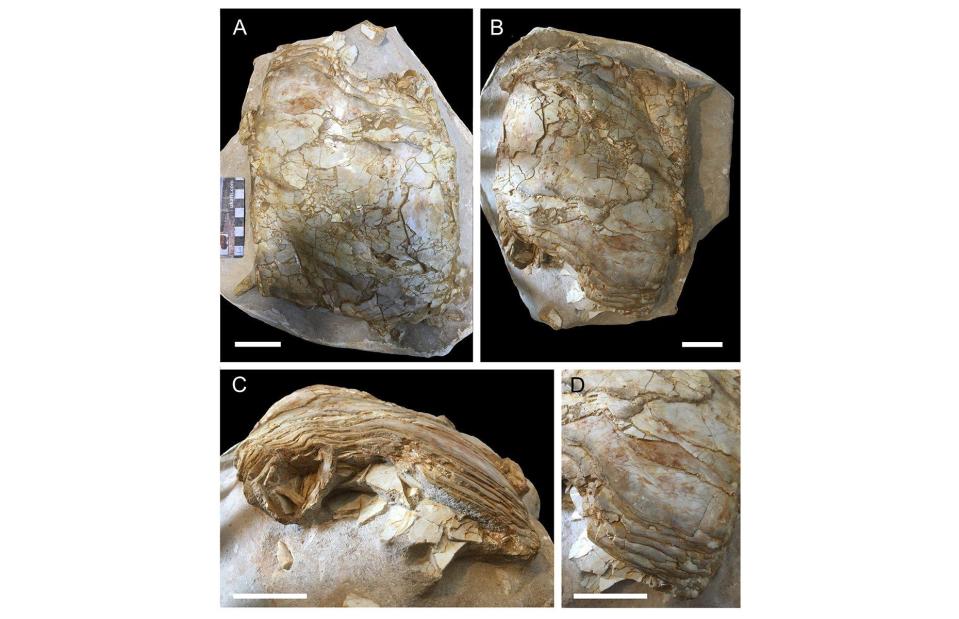
Courtesy of the University of Portsmouth
Also in 2021, scientists at the University of Portsmouth identified a previously unknown species of 66-million-year-old fish from just the fossilised remains of its lung. The organ, retrieved from a larger stone slab of fossil fragments found in Oued Zem, shows this particular coelacanth was the size of a great white shark at around 17 feet (5.2m) long. Palaeontologists studying the lung said it places coelacanths (an ancient order of fish) in a location they had never been found before.
Early gibbon, China
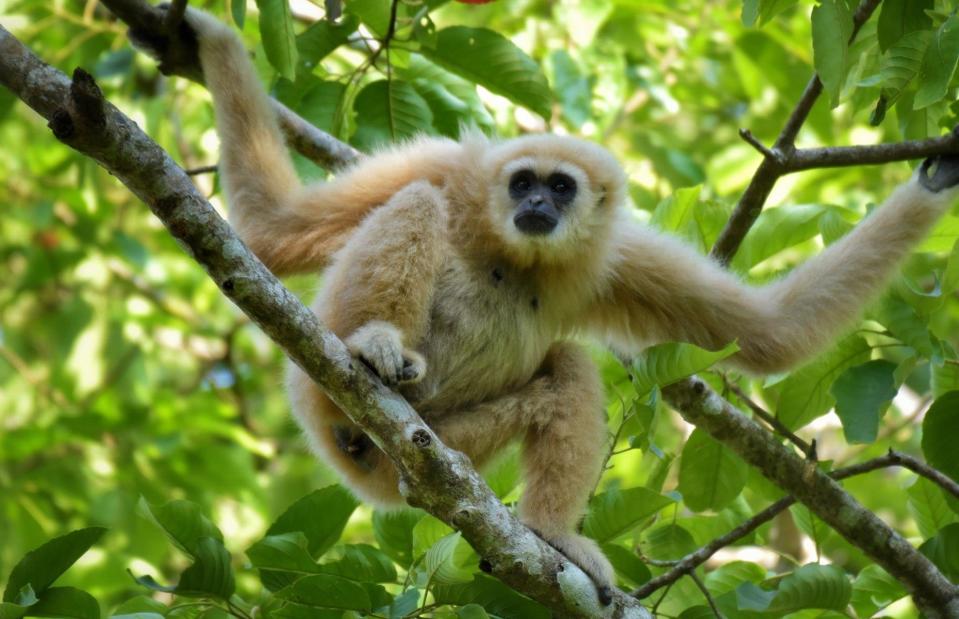
Plutonian p/Shutterstock
In 2022, a newly discovered fossil in China’s Yunnan Province was found to be the missing piece of the puzzle in the known history of ape evolution. The remains of this early gibbon species, named Yuanmoupithecus xiaoyuan, are significant because they date back to the Late Miocene period – making the primate seven to eight million years old. That's much older than most gibbon fossils previously found (which go no further back than two to three million years).
Giant sea turtle, Spain
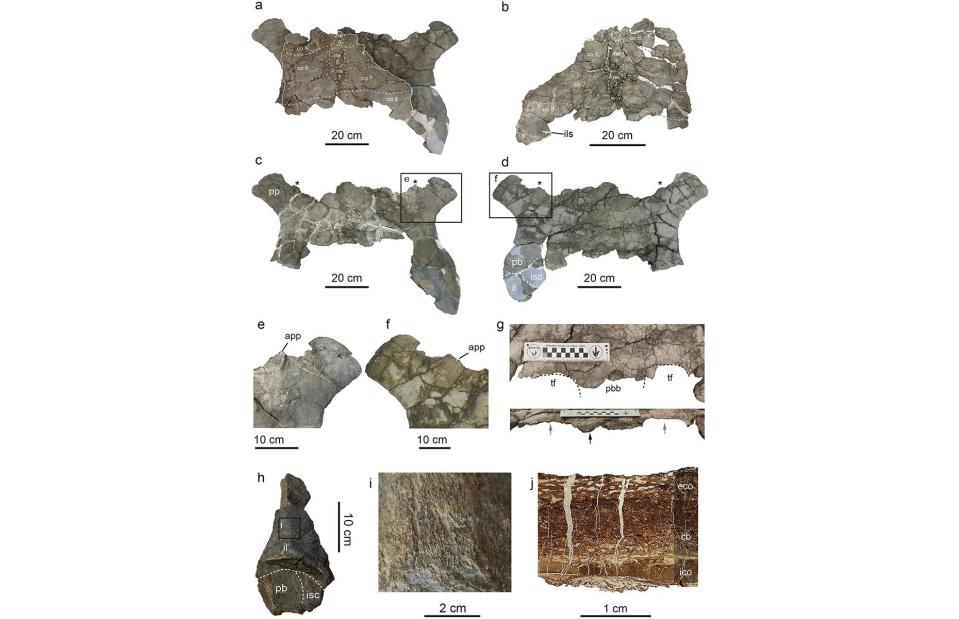
Castillo-Visa, O., Luján, À.H., Galobart, À. et al./Wikimedia Commons/CC BY 4.0
Following the discovery of a complete pelvis fossil and fragments of fossilised shell collected between 2016 and 2021 in northern Spain, palaeontologists revealed a never-before-seen species of extinct giant sea turtle in 2022. Named Leviathanochelys aenigmatica, it is the largest turtle species ever unearthed on the European continent and could have been up to double the size of the marine turtles that swim in our oceans today. The species is believed to have lived between 83.6 and 72.1 million years ago.
Oldest known African dinosaur skeleton, Zimbabwe
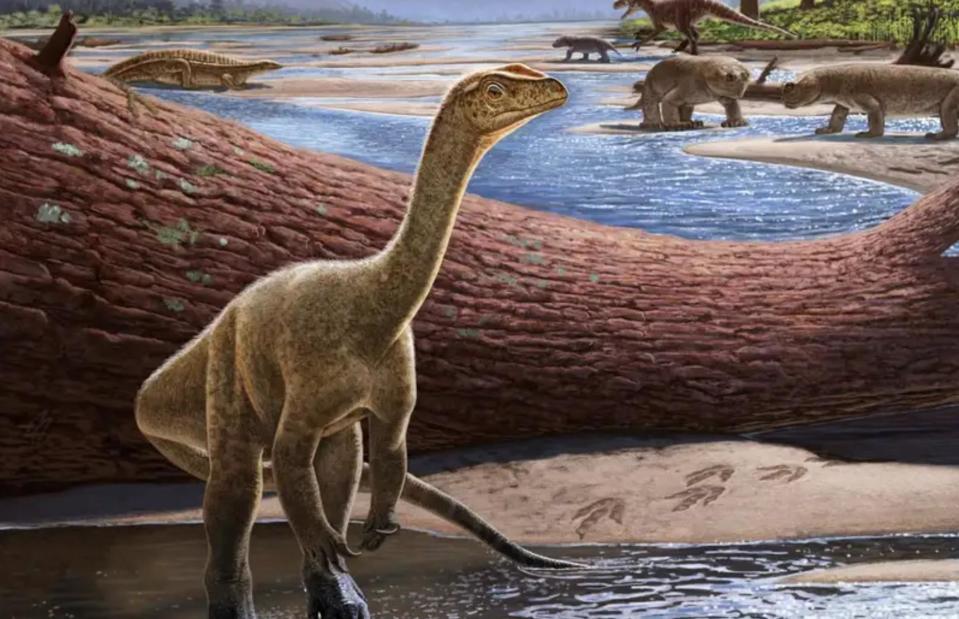
Courtesy of Andrey Atuchin
Also named in 2022 was the oldest known dinosaur to have ever been discovered in Africa, the Mbiresaurus raathi. First found by a Virginia Tech graduate student and other palaeontologists over the course of two digs in 2017 and 2019, the new dino’s mostly intact skeleton identified it as a sauropod. Estimated to be around six feet (1.8m) long and possibly weighing up to 65lbs (29kg), the dinosaur was found in the Zambezi Valley and is thought to have existed some 230 million years ago.
Pterosaur, Scotland, UK
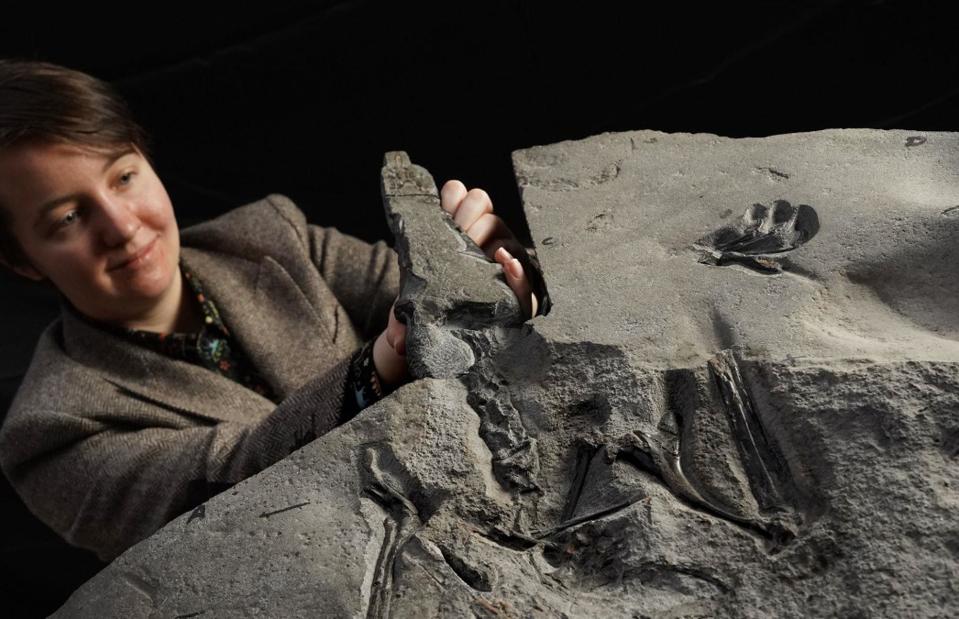
Courtesy of National Museums Scotland
The razor-toothed jaw of what turned out to be the world’s largest Jurassic pterosaur fossil was first found embedded in rock on the Isle of Skye’s limestone coast in 2017. Findings from the follow-up study, led by PhD student Natalia Jagielska, were shared in February 2022 and revealed that the creature was a species new to science. Given the Gaelic name Dearc sgiathanach (pronounced Jark Ski-an-ach), the winged reptile had an estimated wingspan of eight feet (2.5m) and is regarded as "probably the best British skeleton found since the days of [fossil hunter] Mary Anning in the early 1800s".
Thalassotitan atrox, Morocco
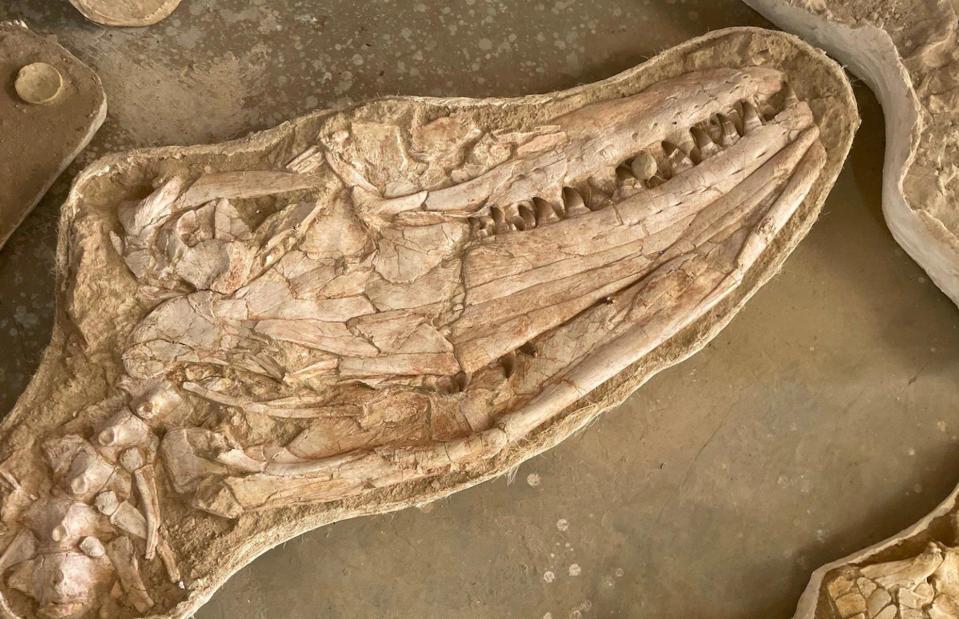
Courtesy of the University of Bath
In August 2022, about an hour from the city of Casablanca, scientists from the University of Bath dug up a skeleton belonging to a previously unseen species of predatory marine lizard. The Thalassotitan atrox ('dreadful titan of the sea') is a kind of mosasaur – a distant ancestor of the modern iguana – which reigned supreme over the oceans 66 million years ago. With a merciless set of gnashers made for tearing apart prey (similar to those of an orca), this sea devil evolved to feast on other marine reptiles before spitting out their bones.
Jurassic fish, England, UK
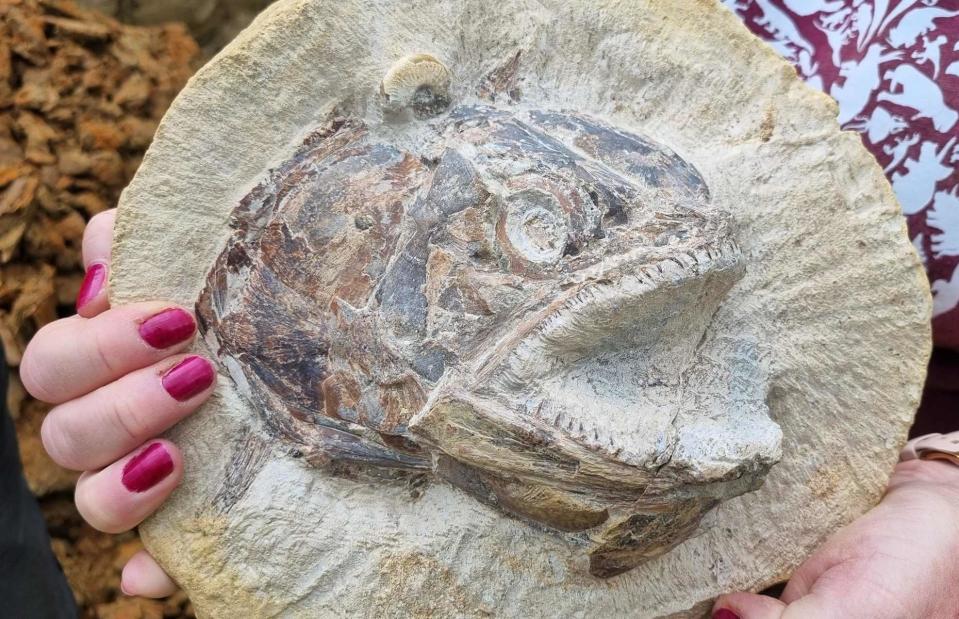
Courtesy of the University of Manchester
The Cotswolds in central south-west England is mostly known for quaint stone cottages and cosy pubs, but it caused quite a stir among scientists in 2022 when a collection of over 180 fossils was unearthed on a working farm. Estimated to be around 183 million years old, the horde contained everything from ichthyosaur skeletons and ancient squid to insects. The most notable find though was a three-dimensional fossil of a Pachycormus, an extinct genus of ray-finned fish. Its head was so well preserved that researchers could even make out its scales and an eyeball.
Sauropod ribcage, Portugal
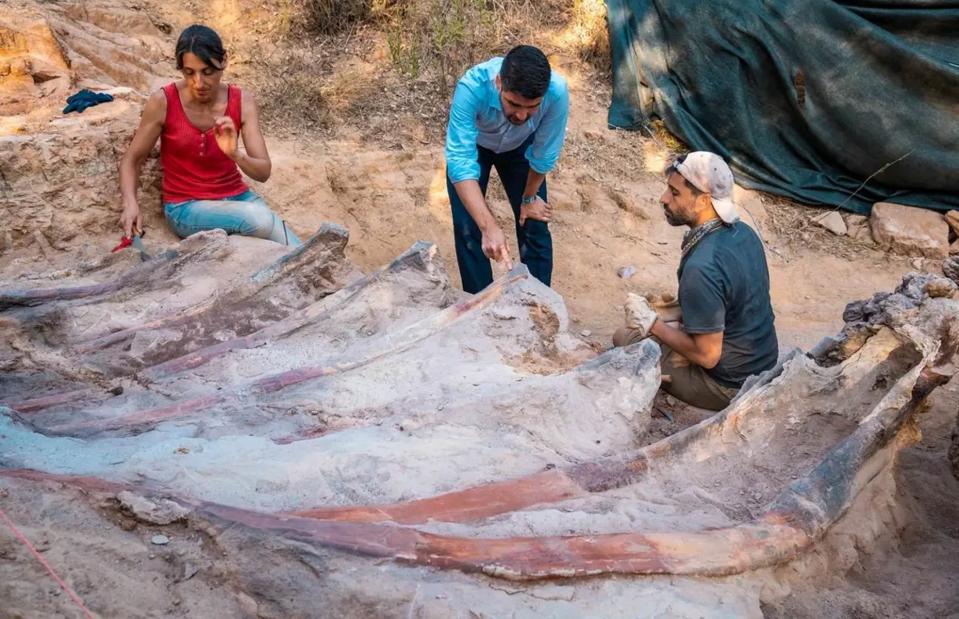
Elisabete Malafaia/Faculdade de Ciências da Universidade de Lisboa
After painstakingly working at a site in Pombal since 2017, palaeontologists were rewarded in 2022 when it was revealed that the gigantic ribcage they’d excavated belonged to the largest dinosaur ever discovered in Europe. Sharing their findings, the team said the ribs were those of a long-necked sauropod, who would have lived about 150 million years ago and weighed around 48 tonnes – more than an adult humpback whale. While the exact species hasn't been determined, the dinosaur is believed to be a brachiosaurid, marked by their elongated necks and tall forelimbs.
Spinosaurid bones, England, UK
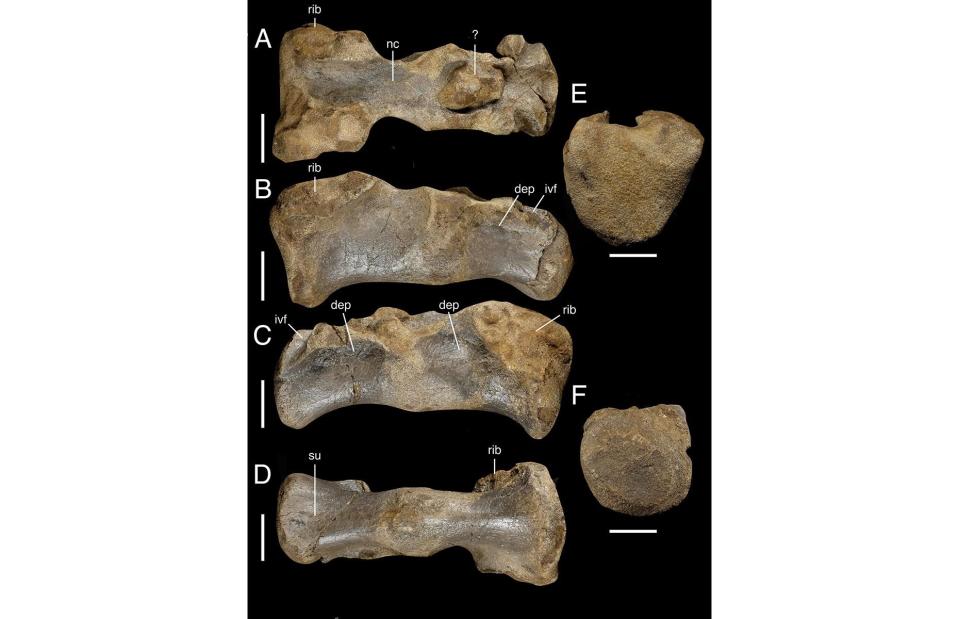
Chris T. Barker, Jeremy A.F. Lockwood, Darren Naish, Sophie Brown, Amy Hart, Ethan Tulloch, Neil J. Gostling/Wikimedia Commons/CC BY 4.0
Elsewhere in Europe, the largest ever land-dwelling predatory dinosaur on the continent was uncovered on the Isle of Wight in 2022. Identified by palaeontologists from the University of Southampton, the fossilised remains of the spinosaurid included its pelvic and tail vertebrae, indicating that it measured more than 32 feet (10m) long and existed 125 million years ago. The dinosaur would have been two-legged with crocodile-like facial features, and would have stalked shallow lagoons and sandflats for its prey.
Earth’s biggest dinosaur, Patagonia, Argentina
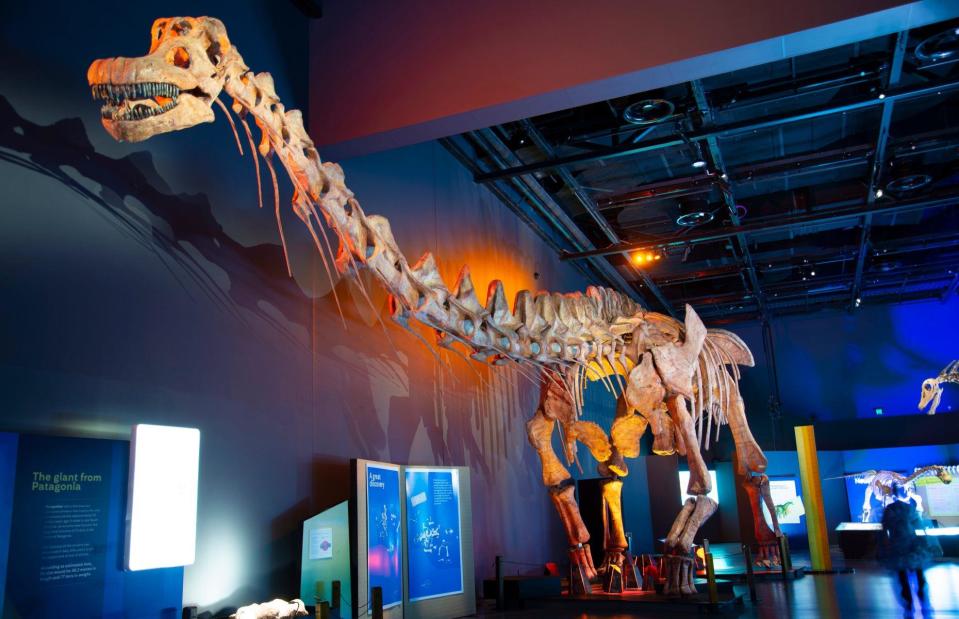
Adwo/Shutterstock
In 2010, an unsuspecting desert rancher in Argentinian Patagonia found what later turned out to be the near-complete skeleton of a Patagotitan alongside several other dinosaur fossils. The largest known animal to have ever roamed the Earth, Patagotitan was a type of sauropod that could span 115 feet (35m) from nose to nail and weigh up to 80 tonnes. Though the name sounds foreboding, these colossal creatures were gentle giants that ate plants. This photo shows a Patagotitan skeleton on display at Australia's WA Museum Boola Bardip in 2022.
Sabretooth cat skull, Iowa, USA
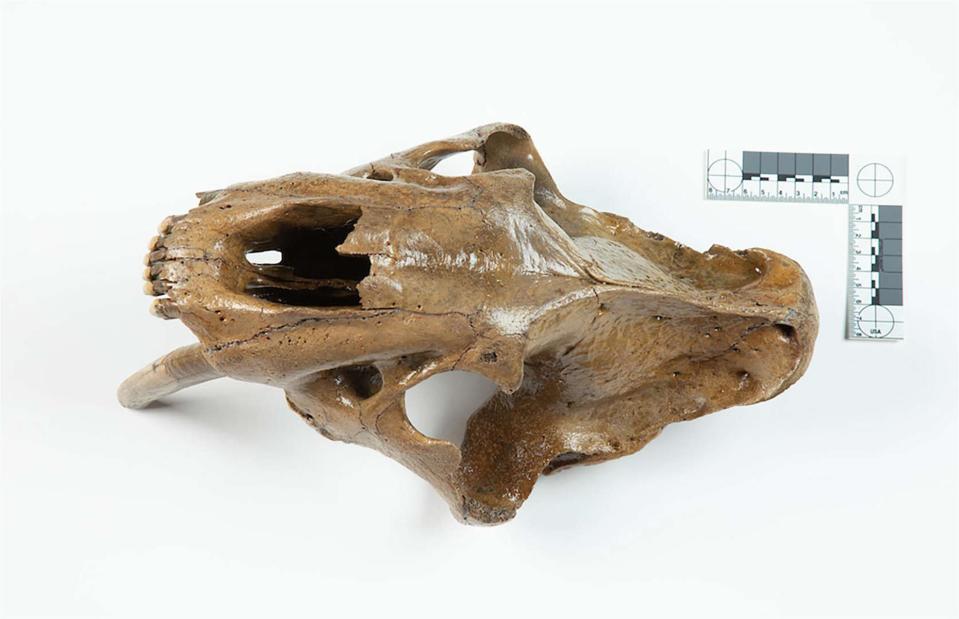
Christopher Gannon/ISU
In early 2023 professors Dave Easterla and Matthew Hill announced their discovery of an extremely rare carnivore fossil. Found among the sandy sediments that run alongside the East Nishnabotna River, the 13,000-year-old near-intact sabretooth cat skull is thought to have belonged to an adolescent animal who was still growing at the time of its death (though it's already around 110lbs/50kg heavier than an adult male African lion). Sabretooth cats vanished from the face of the Earth between 50,000 and 10,000 years ago, and their fossils typically only turn up in fragments – so this is a particularly special find.
Mammal-dinosaur fossil, China
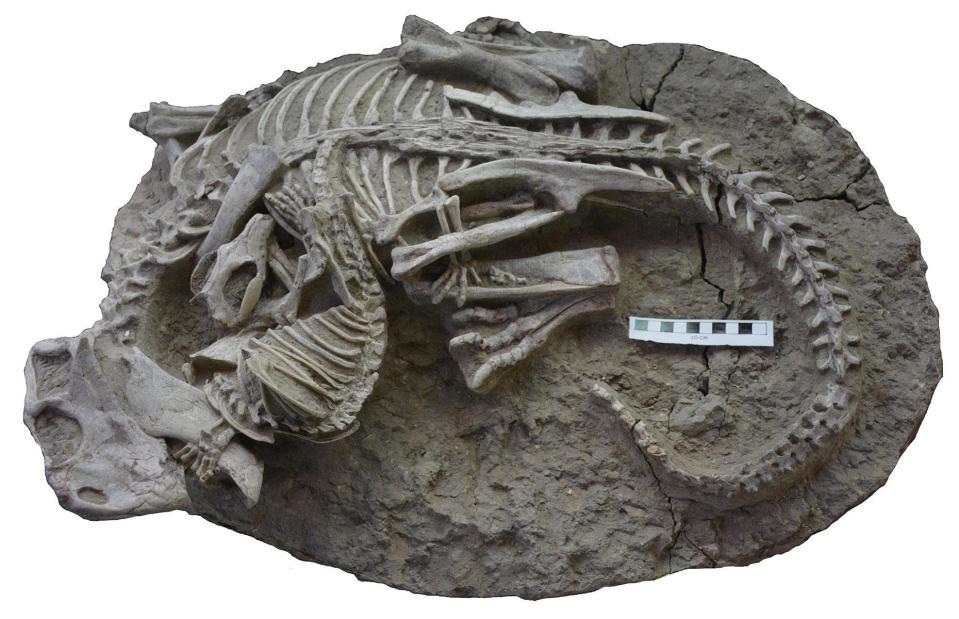
Gang Han
This miraculously complete 125 million-year-old fossil captures a remarkable moment: a dinosaur, a herbivorous psittacosaurus roughly the size of a large dog, being attacked by a carnivorous mammal, the badger-like repenomamus robustus. Frozen in place by volcanic activity in Liaoning Province – nicknamed 'China's dinosaur Pompeii' thanks to its rich fossil record – the specimen presents an exceptionally rare portrait of a mammal actively preying on a dinosaur, at a time when mammals tended to be small and had not yet come to dominate the Earth. The fossil was found in 2012, but was first revealed to the public in July 2023.
Now discover the ancient finds that literally changed history...


